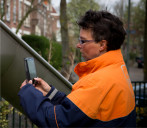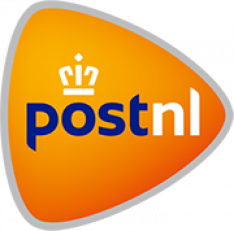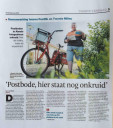Managing the public space using daily insights: the mailman collects data

The way we monitor the quality of the public space is changing. In the past, municipalities hired gardeners and assigned them to mow the lawn twenty times a year. Later, they instructed the gardeners about how the lawn should look: “I don’t care how many times you mow the lawn, but make sure it always looks like the instructions”. The municipality hired an inspector one or two times a year to check whether the gardener did a good job.
Nowadays, we see that the quality of good work is measured in the residents’ satisfaction, rather than following instructions: “no matter how many times you mow the lawn, no matter how the lawn looks like, I want the residents to give a positive evaluation for the lawn!”.
Although the definition of quality and quality measurement has changed last decades, the way of measuring quality hasn’t changed. A professional inspector is still hired to inspect the public space once or twice a year.
A lot of research has been done about influencers of citizen perception of quality in public space. For example, the level of waste on the street is an important influencer. Measuring this daily gives municipalities the possibility to improve the quality of the street every day. Different measures against waste can be tried and evaluated in a short period of time. And thus putting real effort in resident satisfaction.
To be more effective as municipality or entrepreneur in the public space, three ingredients for the monitoring system are required: Firstly, an actual overview of the current state of assets and pavements: are they clean and undamaged? Secondly, a system to measure the perceived quality of the public space, this may differ for various kinds of neighborhoods. Third, a protocol to translate this data into operational processes. Actual measurement data should be connected to operational processes far more than is done now.
Only when these three ingredients are present, different interventions on cleaning, repairing and increasing citizen satisfaction van be monitored and evaluated.
As concept developer for Amsterdam Smart City, I have conducted theoretical and applied research for a real-time based monitoring system for the public sphere. When we combine data citizens create (using social media and dedicated public space apps), data on weather conditions and events and data the mailman collects, we can build such a monitoring system.
The mailman, as eyes and ears on the street can collect data on a daily basis. For example, by taking pictures of certain locations in the city. Moreover, he can be trained to make judgements about the quality of the public space. Finally, he can check whether complaints of citizens have been solved properly.
On September 13th, the Royal Society for Waste and Cleaning management (http://www.nvrd.nl/homepage) organizes a conference on the future of the management of the public spaces. During this day, I will give a plenary speech on the results of one and a half year’s research I conducted together with Harro Verhoeven, Simon Bos and Johan Ruijten. As an example of the projects we ran, take a look at this movie: <https://www.youtube.com/watch?v=0xg06K63nOE>
For more information on this conference, check (note: the website is in Dutch) <http://www.nvrd.nl/bijeenkomsten/website/themadag-beheer-openbare-ruimte#programma>





